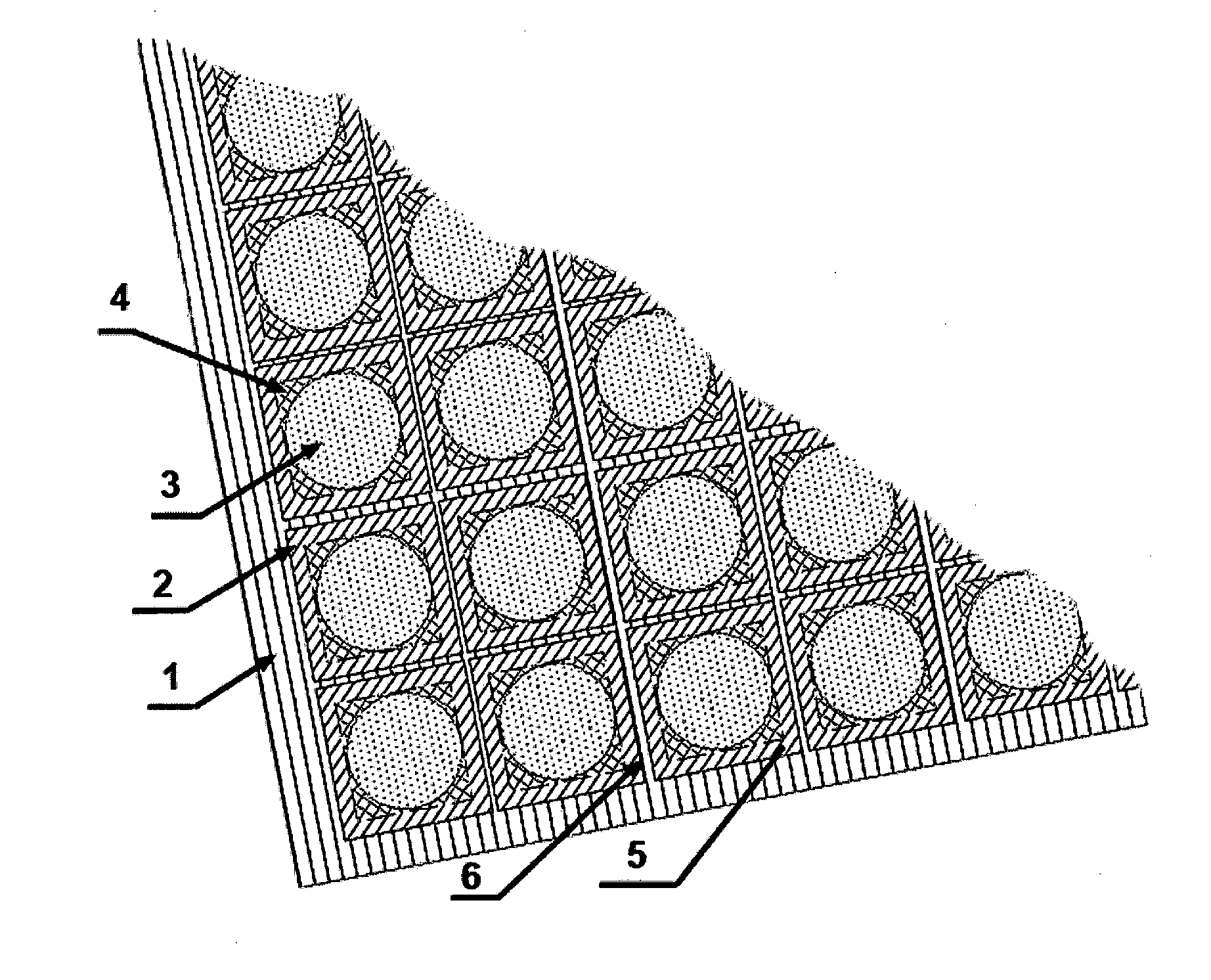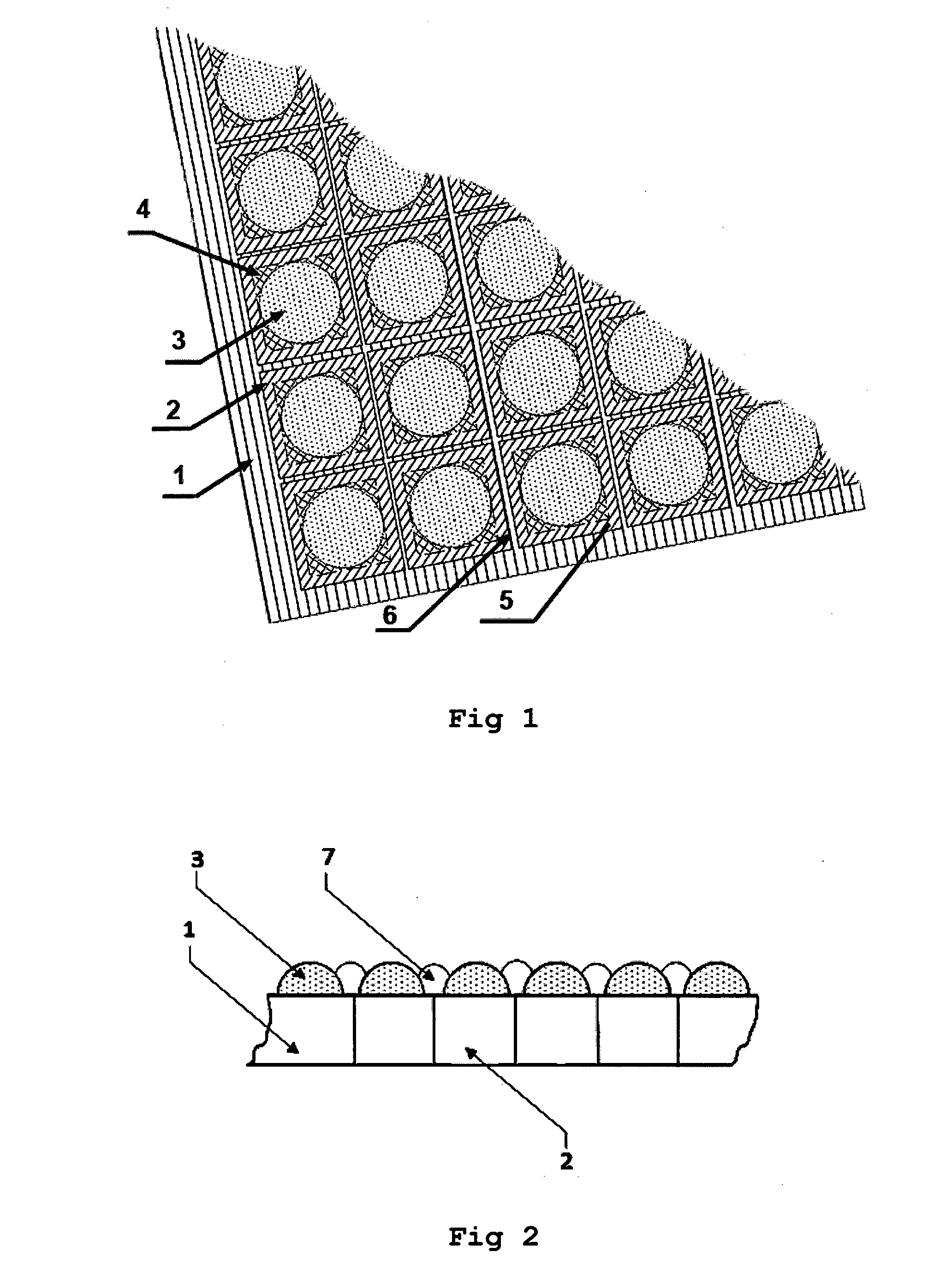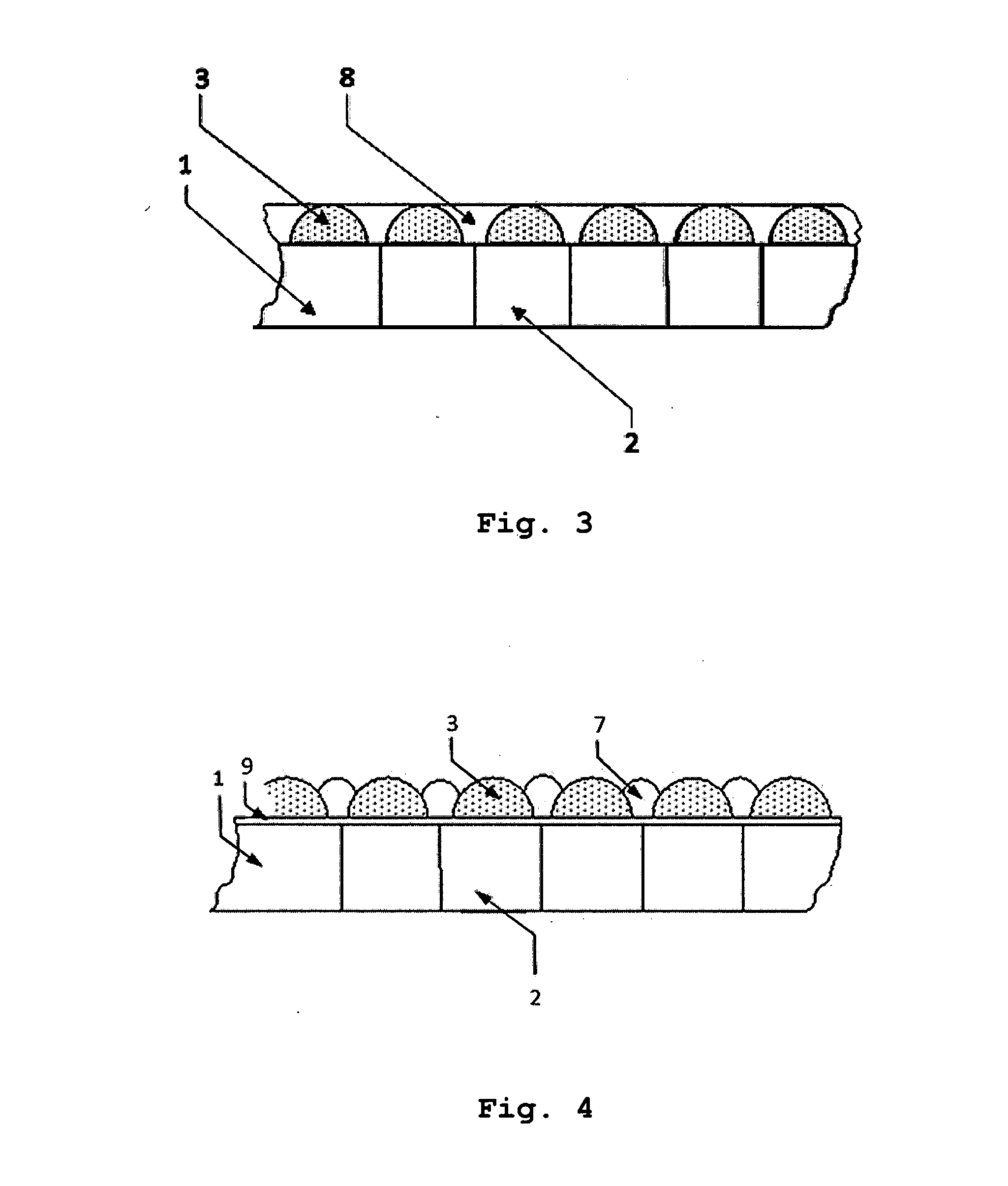Scintillation Detector
a detector and detector technology, applied in the field of scintillation detectors, can solve the problems of low image contrast, additional reduction of contrast, complex existing technology used for establishing pixellated elements within phosphor coatings, etc., and achieve the effect of reducing scattering effect and increasing separation properties
- Summary
- Abstract
- Description
- Claims
- Application Information
AI Technical Summary
Benefits of technology
Problems solved by technology
Method used
Image
Examples
Embodiment Construction
[0019]FIG. 1 shows a scintillation detector with at least one photosensor 1 with a matrix of cells 2 and an array of structured scintillators with mutually isolated elements 3. Each of the cells 2 has photosensitive zone 4 and a zone 5 of low sensitivity (or insensitive zone). The electrical contacts 6 are located between the cells and these contacts are sealed with transparent dielectric (not shown). Normally the sensitive area of zone 4 has a much more large area than the zone of low sensitivity 5.
[0020]Scintillator elements 3 formed on the surface of the photosensor 1 are made using at least one nano-composite based on a phosphor with corresponding range of the detected radiation, e.g., X-rays or gamma radiation. As a nano-composite, one can use any known nano-particle phosphors-based material with efficient registration of the target radiation.
[0021]Location of the scintillation elements 3 spatially correlated with cell-matrix 2 of the photosensor 1, wherein each scintillator el...
PUM
 Login to View More
Login to View More Abstract
Description
Claims
Application Information
 Login to View More
Login to View More - R&D
- Intellectual Property
- Life Sciences
- Materials
- Tech Scout
- Unparalleled Data Quality
- Higher Quality Content
- 60% Fewer Hallucinations
Browse by: Latest US Patents, China's latest patents, Technical Efficacy Thesaurus, Application Domain, Technology Topic, Popular Technical Reports.
© 2025 PatSnap. All rights reserved.Legal|Privacy policy|Modern Slavery Act Transparency Statement|Sitemap|About US| Contact US: help@patsnap.com



